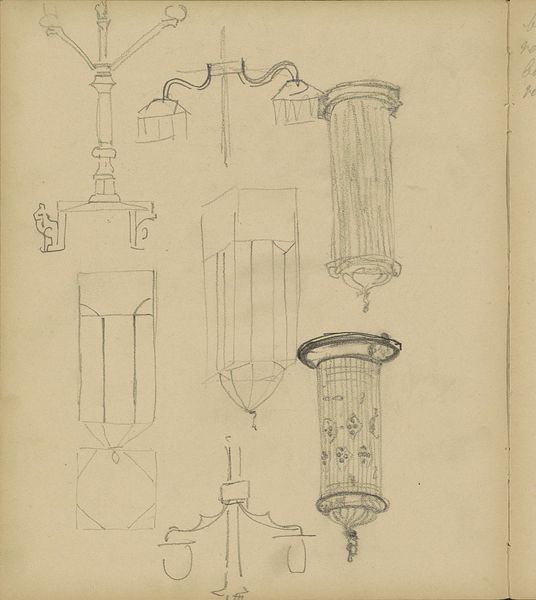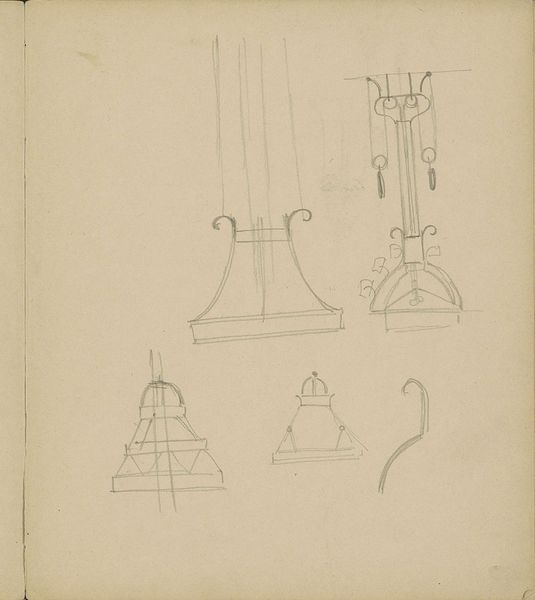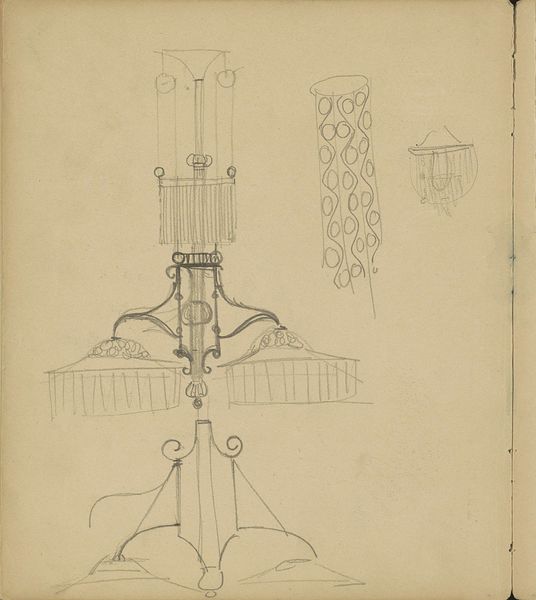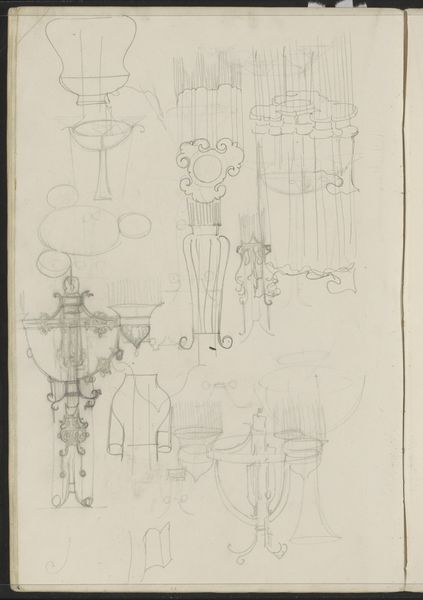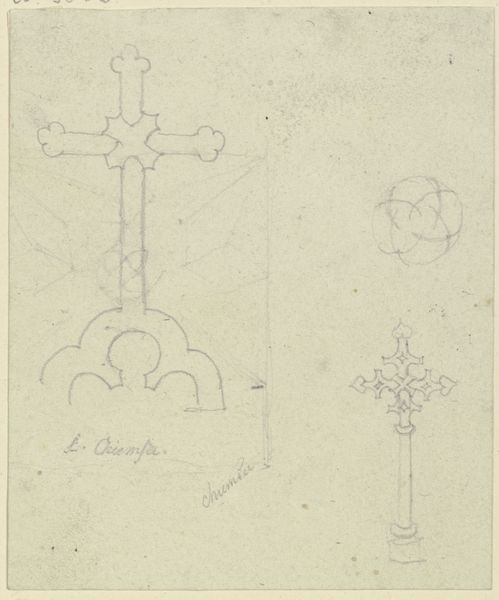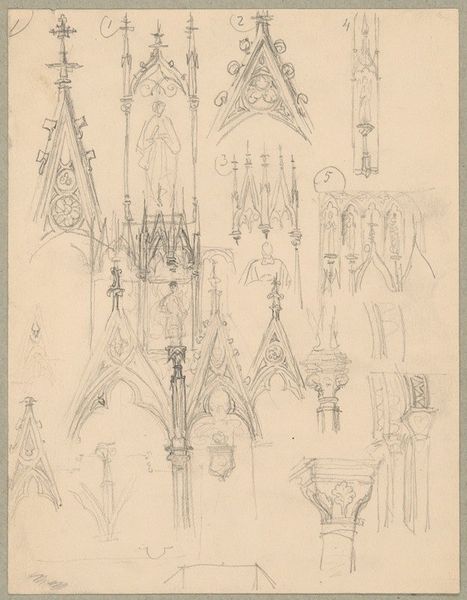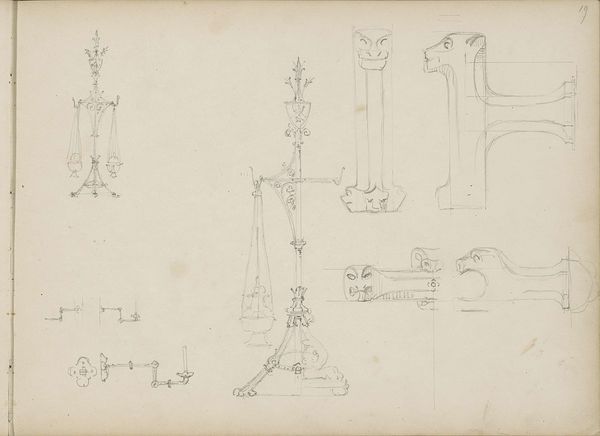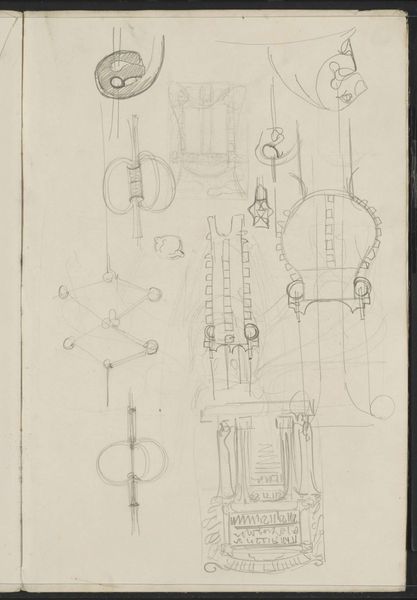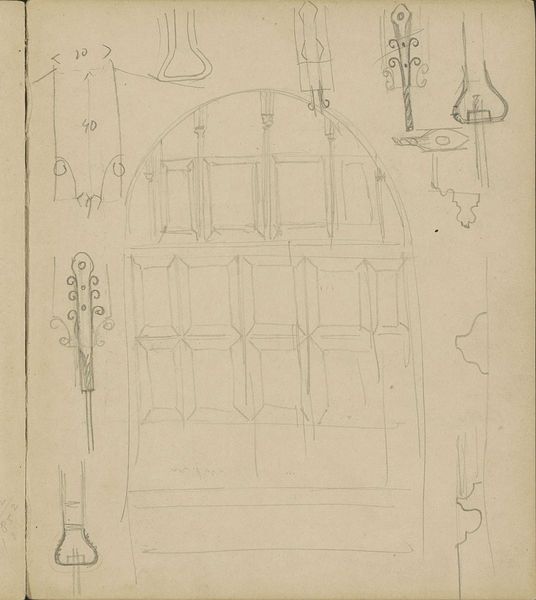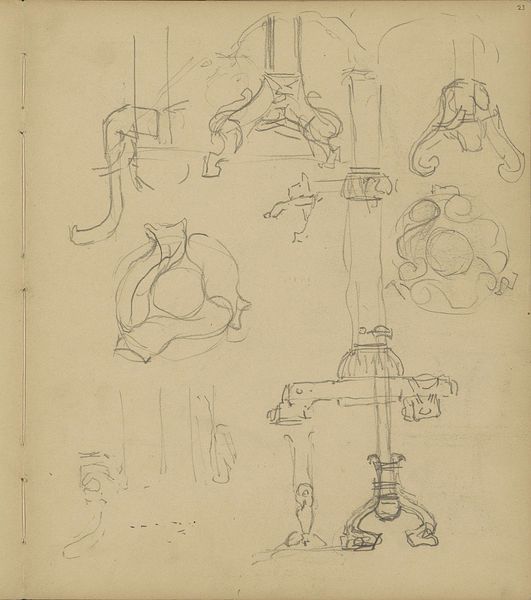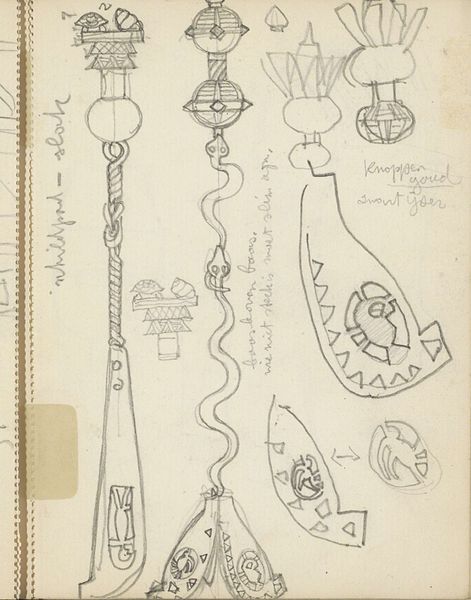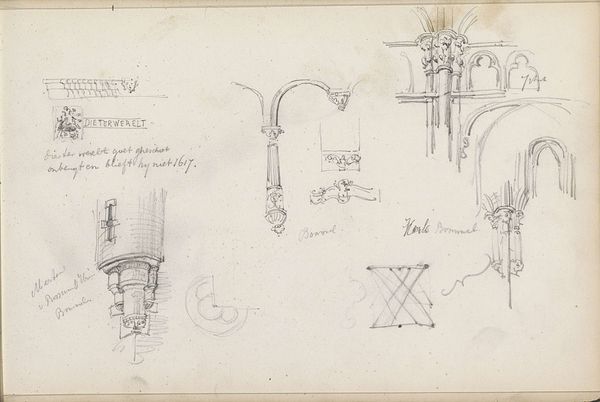
drawing, paper, pencil
#
drawing
#
aged paper
#
toned paper
#
art-nouveau
#
quirky sketch
#
sketch book
#
paper
#
form
#
personal sketchbook
#
idea generation sketch
#
sketchwork
#
geometric
#
pencil
#
line
#
sketchbook drawing
#
storyboard and sketchbook work
#
decorative-art
#
sketchbook art
Copyright: Rijks Museum: Open Domain
Curator: Here we have “Ontwerpen voor hanglampen en een doopvont,” designs for hanging lamps and a baptismal font, dating from around 1905 or 1906, by Carel Adolph Lion Cachet. It resides here at the Rijksmuseum. Editor: Immediately, the rhythmic play of geometric forms, and the deliberate deployment of negative space strike me as particularly arresting, especially within a sketch. Curator: Absolutely. Note how Cachet manipulates the principles of Art Nouveau, distilling organic forms into streamlined geometric shapes, particularly within the lamp designs. Consider the curvature—its careful calibration and the impact it generates through line and form alone. Editor: But what of the making? I'm captivated by the materiality itself – the tactile nature of the aged paper, the almost casual pencil strokes which imply an explorative engagement with materials and process. One imagines Cachet experimenting in his workshop. How does that influence his final decisions, transforming utilitarian design into what some might perceive as “high art”? Curator: Indeed, the sketch work exposes a fascinating element: a dialogue between preliminary design and resolved artistic expression. It suggests the transmutation of concept into tangible form, which, within the conventions of formalist interpretation, emphasizes the power of self-contained visual expression and the relationships of part to whole. Editor: But, this is also decorative art! Consider how the designs may be commissioned objects that involve a collaborative process with artisans, thus impacting the meaning of art and authorship. How do socio-economic dimensions of production and labor further deepen or alter our perceptions? Curator: Your insight rightly steers us to acknowledge the practical underpinnings of this visual piece. Yet, irrespective of labor considerations or final material embodiment, the core of visual tension, of shape interacting with shape remains, indelibly inscribed within this frame. Editor: Undoubtedly. Exploring materiality brings forth new perspectives, and now when looking back at this, the tension between object, sketch, function and the "art" status reveals a richer experience overall. Curator: Agreed, appreciating those points allows us to move into new interpretative depths, and fully grasp the essence of visual design thinking in a broader sense.
Comments
No comments
Be the first to comment and join the conversation on the ultimate creative platform.
